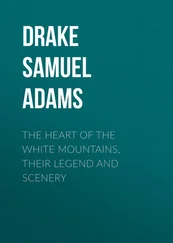It so happens that the rain-bearing winds in Britain blow from the west, especially from the south-west, and that the hill masses of Britain are in the west of the country. As a result Highland Britain as a whole gets a heavy rainfall, for the hills stand in the path of the rain-bearing winds, whilst most of the Lowland Britain is relatively dry. Taking a very general figure, most of Highland Britain gets more than 30 inches of rain a year while most of Lowland Britain gets less. Since the trouble with our climate is that we tend to get too much rain and too little sun it is clear that differences in climate reinforce those due to other features between Highland and Lowland Britain. In the far north-west, for example, where lowland does exist it is of comparatively little value because heavy rainfall and constant cloud result in water-logged conditions and almost useless bogs occur where otherwise good farmland might be found. The contrast in rainfall is shown in the accompanying map, while the effect of the combination of high ground and high rainfall is well brought out in Fig. 3 which shows the general distribution of moorland.
Although the chief visible contrasts between Highland and Lowland Britain are thus to be found in elevation, relief of the ground and soils, these are, in fact, the results of the underlying geological structure. The rocks which underly the hills are for the most part old even in the geological sense and in the course of ages have tended to become indurated and hard or at least resistant to weathering and hence tend to form hill masses rising above the general level. The rocks which underly the lowlands on the other hand are younger in the geological sense, though often very ancient if measured in years. They are softer or less resistant to weathering—there is evidence of this in the muddy streams to be seen after heavy rain, showing that soil or mud or silt is being swept off the land and carried seawards.
It happens that Highland Britain is made up mainly of rocks which are older than the Coal Measures (which contain the bulk of workable coal seams in this country) whereas Lowland Britain is made up mainly of rocks which are younger than the Coal Measures. It is for this reason that we find most of the coalfields of Britain on the margins of the highlands and the lowlands.
FIG. 2.—The Mean Annual Rainfall of the British Isles, showing the contrast between the wetter west and the drier east
The greatest of them all, the Yorkshire, Nottinghamshire and Derbyshire Coalfield, stretches up on to the Pennines and down on to the lowlands ; so do the coalfields of Lancashire and of Northumberland and Durham. The great South Wales field lies just north of the fertile Vale of Glamorgan and amongst the moorland heights.

FIG. 3.—The Chief Moorland Areas of Great Britain, showing the close correspondence with areas of heavy rainfall (Fig. 2) and their association with Highland Britain
As a prelude to understanding the different regions of Britain and consequently the varied habitats in which our plants and animals live it is thus essential to understand. the geology and structure of the ground and to appreciate something of the long and complicated geological history of the country.
READING THE ROCKS
IT HAS long been known that the solid rocks which build up the earth’s crust sometimes contain remains of animals and plants. A slab of shale from the tip-heap of a coal mine may be split open to reveal a beautifully preserved and delicate leaf which, whilst bearing a superficial resemblance to some ferns, on closer examination is found to be different from anything now living. In one of the literary classics which geology has given the English language the young Scottish stone-mason, Hugh Miller, has described the thrill of the chase when his hammer was used to make the Old Red Sandstone rocks give up entombed fragments—so clearly of fish yet so utterly different from their counterparts of the present day. Sometimes it is merely the footprint of some long-extinct reptile, sometimes the actual bones or teeth ; at other times it may be the remains of some minute creatures only revealed by the microscope which excite interest and inquiry into the origin of fossils, as all these remains of the animals and plants of the past are called.
Fossils were once hailed as incontrovertible evidence of the reality of Noah’s flood. Since it was soon made clear that they were to be found in different rocks and at different levels there arose the idea of several successive creations each in its turn overwhelmed by a great deluge. Forming as it were a mantle over many parts of the country are superficial deposits of clay, sand and gravel, to which reference will be made later. These “drift” deposits not infrequently contain shells and other fossils and the inference that these deposits were laid down by the latest flood was so obvious that they were called by the eighteenth century geologists “diluvium” (Latin, diluvium, a deluge or flood) or “diluvial deposits.”
A great advance was made when William Smith (1769 – 1839), who has very rightly been called the Father of English Geology, showed that the same fossils (i.e. different specimens of the same species) were to be found in different parts of the country, sometimes in the same type of rock but sometimes in rocks of different types. If several different species were associated together in one area then the same ones would be associated together in another. So he introduced the Law of Strata identified by fossils, and was able to produce the first geological map of England and Wales (published 1815). Two limestones from different parts of the country might appear to be very similar but if they contained different sets of fossils the inference was that they were of different ages. If on the other hand a sandstone from one region contained fossils identical with those from a shale in another the inference was that the two rocks were being formed at the same time—that they were of the same geological age or “synchronous” and could be “correlated.” It was found that when a species died out or “became extinct” it did not reappear in later rocks. Of course this was quite consistent with the idea of a succession of separate creations and it was not till much later that the theory of evolution permitted the tracing of the relationship between the fossils of one set of rocks and those of another.
The determination of the geological age of rocks by the fossils they contain is one of the two fundamental principles underlying the whole study of historical geology. The other is the Law of Superposition. Where one bed of rock rests upon another it is presumed that the upper bed was laid down after the lower and hence that the upper bed is the younger. A large proportion of the fossil-bearing rocks are sedimentary rocks (i.e. they were laid down as sediments under water—in the sea or in fresh-water)—and this law is true for nearly all such rocks. It is also true for streams of lava poured out from volcanoes or associated beds of ashes. Pompeii was there before the ashes by which the city was buried. But the Law of Superposition only remains true so long as the original order of the rocks has remained unchanged. With earthquakes and mountain-building movements the original order may be changed—the rocks may be folded, or even bent right over so that the original order is reversed. But reversal of the order in this way is the exception, not the rule, and can be detected by detailed survey. No one who has spent a holiday on the magnificent coast of north Cornwall can fail to have noticed how folded and broken are the rocks exposed along the sea cliffs. Examples are shown in Plates III and IV.
Читать дальше













